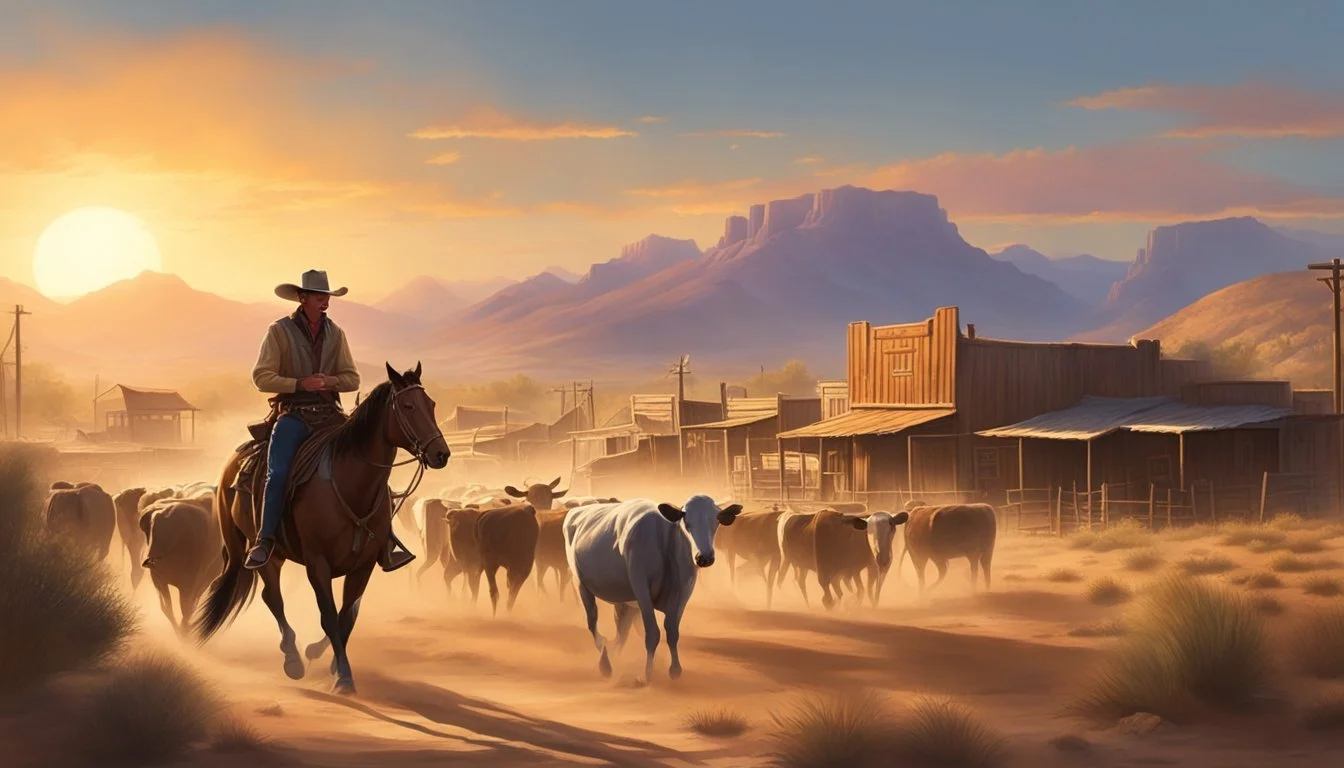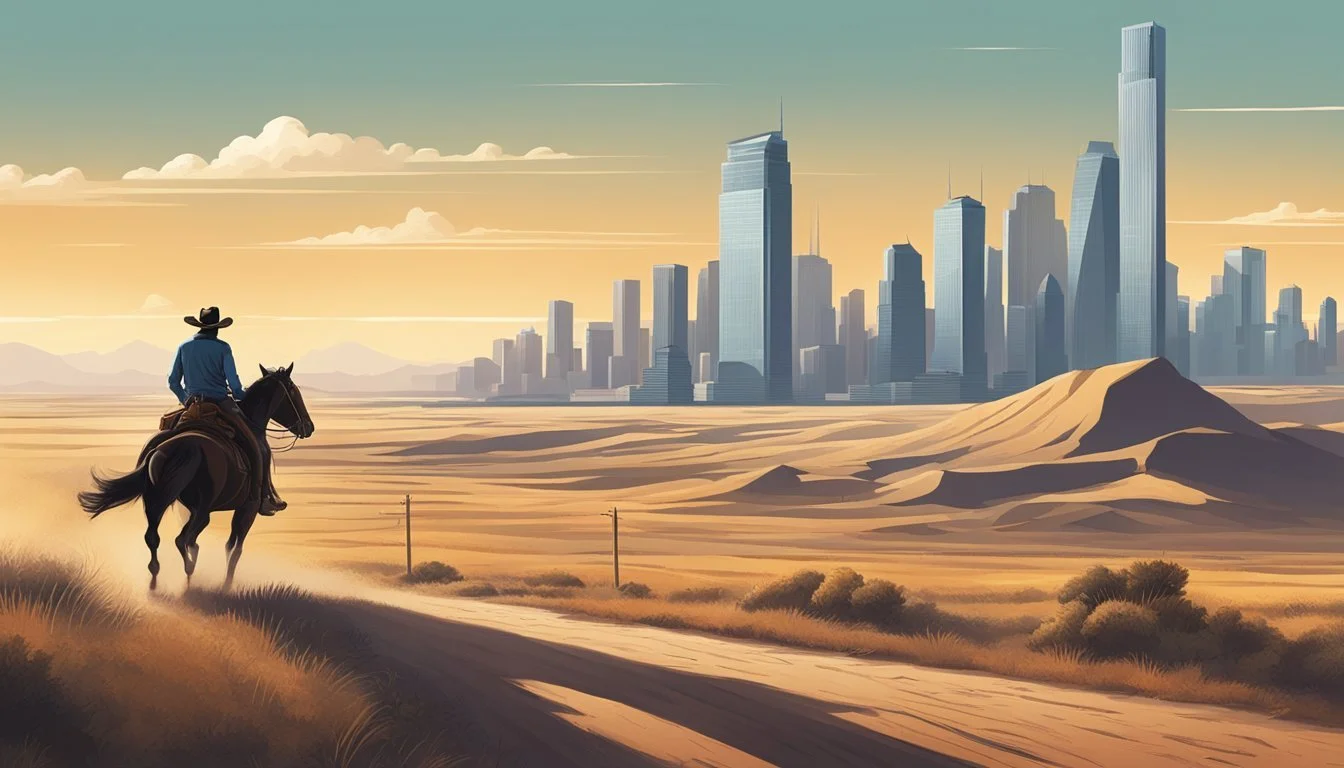The Texas Cowboy's Guide to Unforgettable Western Themed Gatherings
In the heart of the Lone Star State, cowboy culture is not just a storied part of the past; it thrives as a living tradition celebrated through numerous western-themed gatherings. Texas, synonymous with the iconic cowboy, hosts a variety of events that pay homage to this enduring symbol of American heritage. From the historic cattle drives to the rustic charm of ranch living, these gatherings offer a glimpse into a way of life that has shaped not only a state but the identity of a nation.
At these festive occasions, cowboy enthusiasts and curious visitors alike can immerse themselves in the authentic cowboy experience. Events such as the Red Steagall Cowboy Gathering & Western Swing Festival in Fort Worth and The Best Little Cowboy Gathering in Texas in La Grange showcase the vibrant cowboy spirit through music, dance, and an array of western activities. Participants can enjoy the rhythm of western swing, learn the ropes of cattle handling, or simply revel in the camaraderie that these events foster.
Cowboy gatherings in Texas serve as a testament to the state's commitment to preserving and celebrating its rich western heritage. They offer a space where traditions are passed down, stories are shared, and the cowboy lifestyle is revered. For those eager to tap their boots to a classic country tune or sit spellbound by tales of the trail, these events are essential destinations on the cultural map of the West.
The Historical Roots of Cowboy Culture
The cowboy tradition began with the practical needs of ranching and expanded into a symbol of American cultural identity. This evolution was characterized by the development of the cattle industry, legendary trails from Texas to rail heads in Kansas, and the crucial influence of vaqueros—Mexican cowboys who were expert horsemen and cattle handlers.
Development of the Cattle Industry in the American West
The cattle industry in the American West sprouted from the introduction of cattle by Spanish explorers in the 1500s. These early herds laid the foundation for what would become a booming industry. Ranches became the epicenter of cattle rearing, leading to the rise of the open range system, where cattle roamed freely across vast tracts of land. This era necessitated the branding of cattle as a way to establish ownership.
Legendary Trails and Cattle Drives
One can't speak of cowboy culture without mentioning the iconic cattle drives. Cowboys herded thousands of cattle along legendary trails such as the Chisholm Trail and the Goodnight-Loving Trail. These drives typically started in Texas and ended at railheads in Kansas, where the cattle were shipped to markets in the East. This period was marked by long treks that tested the cowboys' endurance and skill in navigating treacherous paths and river crossings.
Notable Trails Starting Point Ending Point Chisholm Trail Texas Kansas Goodnight-Loving Trail Texas Colorado & Wyoming
Influence of the Vaqueros and the Arrival of the Railroads
The skills and techniques that define cowboy culture owe a great deal to the vaqueros. Before there were American cowboys, vaqueros mastered the arts of roping, horsemanship, and cattle handling in the open range. Their practices were adopted and adapted by the Texans. The arrival of the railroads in the latter half of the 19th century revolutionized the cattle industry, making long drives less necessary and introducing a new era for cowboys and the cattle industry.
The Cowboy Lifestyle
The cowboy lifestyle is steeped in tradition and daily commitment to ranch duties, where rodeos showcase skill, and the relationship with horses and livestock defines a way of life.
Everyday Duties and Responsibilities
Cowboys start their day before the sun rises, tending to a variety of tasks that are critical for the management of the ranch. Their responsibilities often include feeding and caring for livestock, maintaining ranch equipment, and repairing fences. A cowboy's proficiency in roping and horsemanship plays a significant role in effectively herding cattle or sheep and ensuring their wellbeing.
Morning:
Check the health of animals
Maintain the cleanliness of the stables
Afternoon:
Repair fences and structures
Train younger horses
Manage herds on the range
Evening:
Prepare animals for the night
Plan for the following day’s work
Care for, clean, and store equipment
Rodeos and Competitive Events
Rodeos are not just entertainment; they are a celebration of the skills that cowboys use in their everyday work. Competitions such as bull riding, calf roping, and bronc riding test a cowboy’s expertise and agility. Key events at a rodeo might include:
Bull Riding: Demonstrating extreme levels of courage and skill.
Barrel Racing: Showcasing speedy and precise horsemanship.
Team Roping: Highlighting the coordination between two riders in catching cattle.
The Importance of Horses and Livestock
Horses are not just companions; they are vital partners in a cowboy's daily duties. An excellent level of horsemanship is necessary for a cowboy, as they must ride, guide, and care for their horses with precision and understanding. Livestock, namely cattle, are the heart of the ranch's economy and require vigilant management and herding, often across expansive pastures.
Horse Care: Includes grooming, feeding, and training.
Livestock Management: Ensures the health and productivity of the herd.
Herding Techniques: Are used to move animals safely from one location to another.
Cowboy Culture and Symbolism
Texas cowboy gatherings not only celebrate the state's storied history but also deepen the understanding of cowboy symbolism and its cultural significance.
The Iconic Cowboy Hat and Attire
The cowboy hat, with its wide brim and high crown, serves as the quintessential symbol of cowboy culture. It provides protection from the sun and elements, quintessential for the long hours spent outdoors. Cowboy attire isn't merely for show; it's constructed from durable fabrics designed to withstand the rigors of ranch work. Typical elements include denim jeans, leather boots, and bandanas, each with functional purposes, like protection and utility, tightly woven into their design.
Music, Craft, and Storytelling
Cowboy gatherings resonate with the melodies of country music and the strumming of guitars, integral to cowboy culture. Music and storytelling are the lifeblood of these events, capturing the trials, joys, and humor of Western life. Craft is displayed in the meticulous artistry of saddle making and the skillful practice of leatherworking, preserving traditions that have been passed down through generations.
Cowgirls: The Women of the West
Cowgirls play a pivotal role in the West, embodying resilience and skill parallel to their male counterparts. They contribute significantly to the cowboy culture, often seen wearing wide-brimmed hats and fabric that's just as rugged as that of the cowboys. The cowgirl's place in Western gatherings is marked not only by their distinctive style but also by participating in rodeos and showing expertise in horseback riding and ranching tasks.
Key Texas Destinations for Western Enthusiasts
Texas, with its rich history and cultural heritage, boasts several destinations that provide a genuine cowboy experience. These sites invite enthusiasts to step into the Old West, offering a blend of history, tradition, and entertainment.
Fort Worth: A Gateway to the West
Fort Worth is often celebrated as the historical "Gateway to the West" with The Fort Worth Stockyards as one of Texas's most authentic western experiences. Visitors can witness the iconic cattle drives held daily at 11:30 AM and 4:00 PM, reminiscent of those on the Chisholm Trail. Beyond the drives, the Stockyards embrace the cowboy spirit with numerous shops, restaurants, and live music embodying a Western atmosphere.
Bandera: The Cowboy Capital of the World
Known as the "Cowboy Capital of the World", Bandera remains a significant destination for cowboy enthusiasts. The town's dedication to preserving the cowboy way of life is evident in its rodeos, honky-tonks, and Western-themed events. Bandera's location also serves as a gateway to exploring the rugged Texan landscapes on horseback, reflecting a lifestyle that is both historic and vibrantly alive today.
Ranches and Guest Ranches Offering an Authentic Cowboy Experience
Guest Ranches: Visitors seeking an immersive cowboy experience can reside at various ranches throughout Texas. Each ranch offers unique adventures from horseback riding, cattle round-ups to campfire storytelling.
Dixie Dude Ranch, for example, found in Bandera, invites guests to take part in an array of traditional activities on its 724-acre property which has been hosting visitors since 1937.
Working Ranches: For those looking to actively participate in cowboy duties, several working ranches offer the opportunity to embrace the cowboy lifestyle fully. These ranches allow guests to engage in daily chores, learn roping skills, and understand cattle management, providing a deeper connection to Texas' cowboy heritage.
Through these destinations and experiences, Texas continues to honor its Western heritage and offers visitors a chance to step back in time to the days when cowboys roamed the open range.
Western Themed Gatherings and Celebrations
The rich heritage of the cowboy lifestyle is celebrated through various themed gatherings and festivals, often involving traditional outdoor cooking and immersive cultural experiences.
Planning a Cowboy-Themed Party or Event
When planning a cowboy-themed party or event, it’s crucial to focus on authenticity. Incorporating elements like traditional western music, cowboy poetry, and decor reflective of the Old West can set the tone. They may consider hiring local cowboy musicians and storytellers to enrich the event with cultural significance.
Venue: Ideally outdoors to mimic the environment cowboys thrived in.
Activities: Roping, horseshoe pitching, and quick-draw competitions.
Festivals and Parades Celebrating Cowboy Heritage
Festivals and parades celebrating cowboy heritage offer a way for communities to honor their history. Events such as the Texas Cowboy Poetry Gathering and the Red Steagall Cowboy Gathering in Fort Worth Stockyards showcase cowboy arts and music while providing educational experiences.
National Cowboy Poetry Gathering: A platform for poets and musicians.
Red Steagall Cowboy Gathering: Includes Western Swing Festival and a parade.
Outdoor Cooking and Traditional Campfire Meals
At these gatherings, one is likely to find chuckwagon cooks serving up traditional cowboy fare. Outdoor cooking, especially over campfires, is a staple with dishes featuring beans, corn, and slowly cooked meats.
Essential Eats: Beans and cornbread, barbecued meats, (What wine goes well with barbecued meats?) and dutch oven desserts.
Cooking Methods: Open flames and cast-iron cookware for that authentic smoky flavor.
Modern Impact and the Future of Cowboy Culture
The future of cowboy culture continues to evolve while honoring its historic roots. This section delves into how the traditions are preserved, their representation in media, and initiatives aimed at education and outreach.
Conservation of Traditions and the Role of Museums
Museums play a pivotal role in preserving the cowboy heritage. They act as custodians of artifacts and stories that embody the essence of cowboy culture. Texas, often referred to as the cowboy state, hosts institutions like the Texas Cowboy Hall of Fame, which ensures that the history and traditions are accessible for future generations. Visitors can witness firsthand the rugged fashions, tools, and narratives that have shaped the Texan identity.
Documenting History: Museums collect and exhibit cowboy attire, weaponry, and other historical pieces.
Interactive Displays: Some museums offer live demonstrations of cowboy skills and crafts.
The Cowboy in Hollywood and Popular Media
Hollywood has immortalized the cowboy image in countless films and television shows, often placing cowboys at the forefront of American iconography. This portrayal has a significant impact on how cowboy culture is perceived today. Although sometimes idealized, these depictions have helped maintain the cowboy's status as a symbol of freedom and adventure. Current productions strive for authenticity, occasionally consulting with real-life cowboys to ensure accurate representation.
Film and Television: Cowboys are depicted as heroes of the Old West, faced with struggles and triumphs.
Beyond Entertainment: The cowboy image influences fashion, music, and literature, maintaining its relevance.
Educational Programs and Outreach Initiatives
Education and outreach programs seek to actively engage individuals with the real-world aspects of cowboy culture. They often focus on horsemanship, ranching skills, and the environmental stewardship practices that modern cowboys must adopt. Programs may include:
Workshops: Instruction in roping, riding, and cattle management.
Conservation Efforts: Teachings on sustainable ranching and land management practices that respect the environment.






